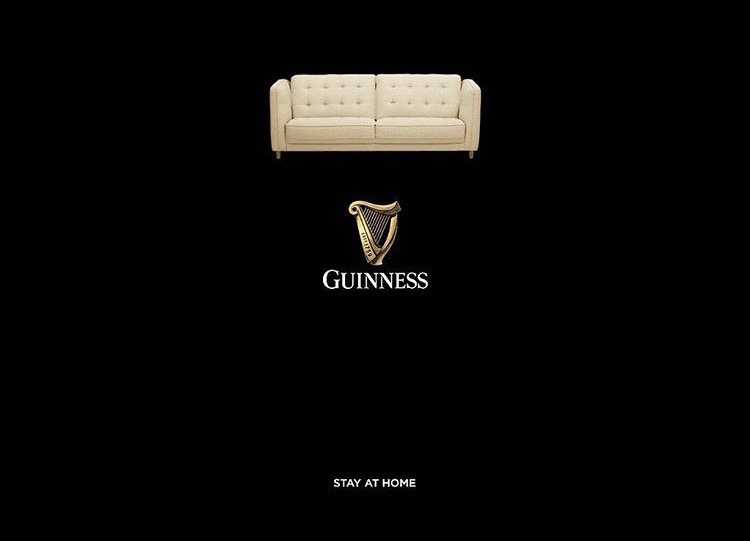Creating marketing activity that has global synergies
In January 2020, I was fortunate enough to take a trip down to Dublin’s fair city. I visited some tourist attractions including Trinity College and St Stephens Green, but for me the highlight was the infamous Guinness Storehouse.


Since its opening in the year 2000, the Guinness Storehouse has had over 20 million visitors walk through its doors. Now that’s a lot of fuss over one beer. What an experience it was. I was educated in the origins of the beer, its history and the lengthy process of creation. One thing that stuck out to me on that visit was the marketing. As PR student, I was fascinated at the impressive collection and history of advertisements that one brand had to offer. A whole floor. Solely dedicated to the history of their advertisements. The space was filled with interactive materials of both their printed and video advertisements. Including campaigns and merchandise. It was highly enjoyable and definitely a must see.
Getting to experience the vast and historic display of advertisements really got me thinking of the organisation’s success. Guinness has a huge global footprint. It is brewed in almost 60 countries and is available in over 150. How did a beer become so globalised to the extent that it is arguably an Irish icon? The very key to its success is that Guinness are creating marketing activity that has global synergies.

Guinness advertisements have been shown on television, radio, posters, billboards, newspapers and various social media platforms. Over the years, they have had many different advertising campaigns that include different themes, genres, mascots and several taglines. Guinness has several taglines to its credit which have helped to increase its brand visibility like ‘Guinness is good for you’ and ‘Made of More’ to name a few. Their advertisement material completely different from year to year. A noticeable difference in their more recent campaigns from the last 10 years, is the change from persuasive, to emotive language. In the past, advertisements would have focused on persuasion and information about the beer. However, they modern ads are based on pure emotion and focus on selling feeling. For example, Guinness are the official sponsor of the six nations rugby. One of there ads focus on Shane Williams, who plays rugby professionally for Wales. He was told all his life that he would never play rugby due to his height as he was only 5 foot 7 inches. The advert focuses on the strength of his determination and character and that is why he is such a successful rugby player, and despite the odds, he plays professionally for Wales. Other adverts from the ruby campaign include Gareth Thomas, captain of the Welsh rugby team, and his strong of his struggles with mental health. He was afraid to come out as gay to his teammates and the rest of the world. But despite his fears he was met with an extremely positive response from his team. The campaign promotes the morals of being “Never alone” and “Always a part of a team”. These adverts create an emotive response for the audience. The stories are relatable and inspiring to large audiences of all age groups. The stories are heart warming and create a beautiful picture of the morals that Guinness brand has and the ability it has to bring people together.
Guinness take a diverse approach. Their marketing strategies work hard to create and provide a great customer experience across cultures. Guinness often make their beer a symbol of unity. Something that can bring everyone together despite their differences. As they are a global brand, they successfully recognise and show empathy towards a diverse customer base. There advertisements have varied themes and another modern campaign called “The Sapeurs” shows just that.
A group of humble and refined gentlemen, called the Sapeurs, use their flair, creativity and sense of style to express their own unique identity and code of honour. The advert focuses on the sense of community created by the beverage as it brings people together. The ad displays a weird and wonderful range of people and personalities, but they are all gathered together to enjoy one and others company with a Guinness. This campaign takes place in Africa but was aired globally. A further demonstration of their marketing diversity, fitting for their global audience.
Guinness focus on bring people together however during this global pandemic that is not an appropriate message to spread. Guinness still continue to promote positive messages such as their infamous illusion posters, this time the pint of Guinness creating a sofa to encourage the public to practise social distancing. Guinness also donated Guinness Easter Eggs on World Health Day to the doctors and nurses in Dublin who are treating patients with Coronavirus. This kind gesture was a creative way of demonstrating appreciation and gratitude for the essential workers on the front line, while receiving positive publicity for the Guinness brand.


Even at a time when customers can’t access their products in bars, Guinness still finds a way to stay relevant and in the minds of the public. Now that’s what I call effective marketing.
Ciara Hughes is a final year student at Ulster University studying BSc Communication Management and Public Relations. She can be found on: Twitter, LinkedIn, and on her website: ciarahughespr.wordpress.com
